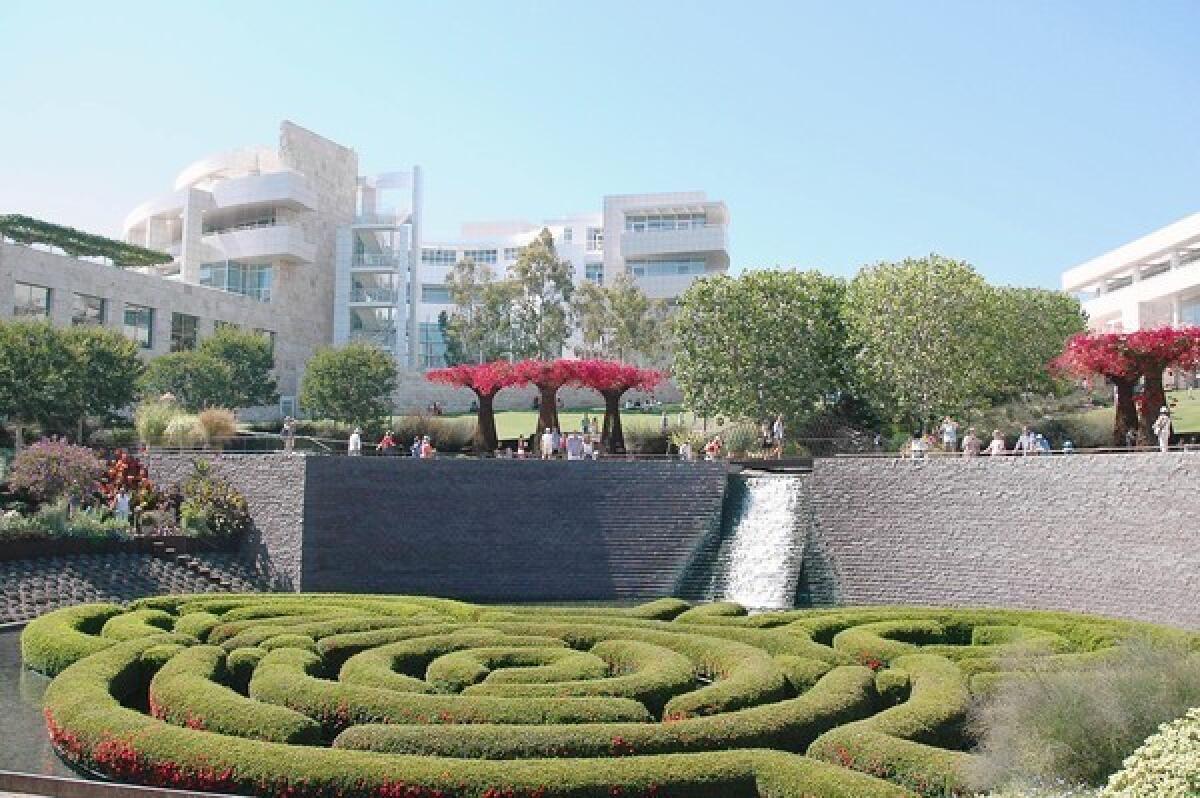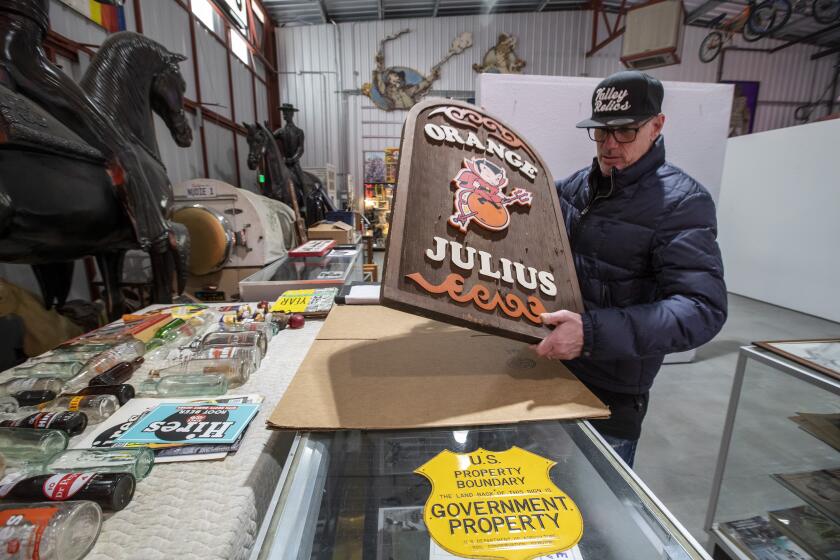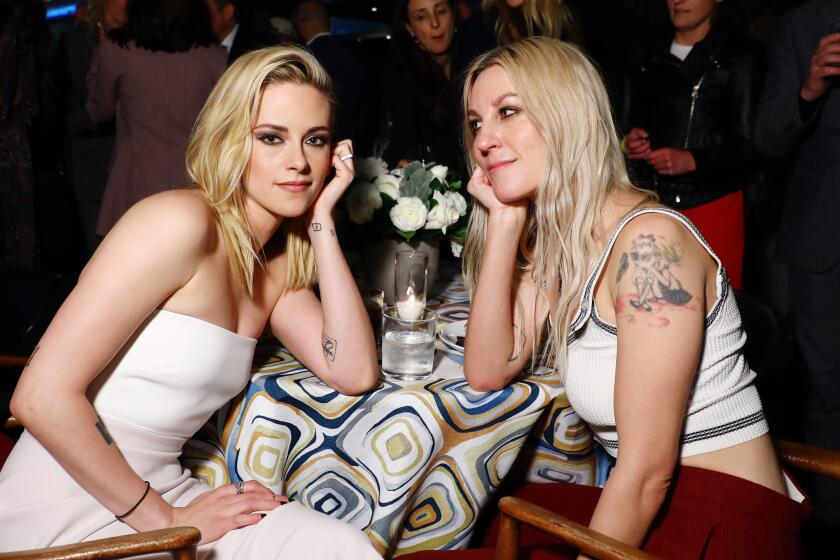Getty to create $10-million COVID-19 relief fund for L.A. arts organizations

- Share via
The COVID-19 pandemic has brought a torrent of bad news to cultural institutions, which have had to close galleries, cancel exhibitions and lay off workers. But a new relief fund could bring a glimmer of hope — and the possibility of survival — to Los Angeles arts organizations.
The J. Paul Getty Trust has announced that it is establishing a $10-million COVID-19 relief fund for small and midsize visual arts organizations in Los Angeles County. In addition, the Fellowship for the Visual Arts grant, which is administered by the California Community Foundation (CCF) from an endowment established by the Getty in 1988, will this year be repurposed as an emergency support grant for individual visual artists.
CCF will administer both grant programs.
“The Getty has an important role in the cultural life of the city,” says Jim Cuno, president and chief executive of the Getty Trust. “The idea is that we could work with others and get something done to address the needs of small and midsize institutions, which have fewer resources that can sustain them over time.”
After laying off all part-time employees last week, the Museum of Contemporary Art institutes cuts for full-timers. Only four security personnel are spared.
The organizational grants will be geared at visual arts institutions based in Los Angeles County and will range in amount from $25,000 to $200,000. The funding for these is being drawn from the Getty Trust’s strategic initiatives fund.
“It’s a sum of money that we put aside for unanticipated opportunities that are deserving,” Cuno says. The hope is that other foundations and individual donors will step forward to support it. “We don’t want to be doing it alone.”
The artist grants will be part of a regular cycle of individual grants awarded through the CCF. The exact number and amount of these, along with guidelines for eligibility, are still being worked out, says Getty Foundation director Joan Weinstein, who has helped spearhead the COVID-19 relief effort.
“We need to look and see what funds are available,” she says. “But we will work with an intermediary to get those grants out the door as quickly as possible. We know how much artists are suffering right now.”
Details about how to apply for the grants will be made available on the websites of the CCF (calfund.org) and the Getty (getty.edu) in coming days.
A pandemic that may last weeks or months could turn temporary shutdowns of local museums into permanent closures.
The Getty began working on a relief plan in mid-March, just five days after the World Health Organization declared COVID-19 a pandemic, and three days after both the Getty Center and the Getty Villa (and a slew of other Los Angeles institutions) were closed to the public.
In 2005, after Hurricane Katrina, the Getty Foundation supported recovery and conservation efforts in New Orleans. This included helping to fund a team from the National Trust for Historic Preservation in the weeks after the storm to help determine what could be preserved. (The effort helped save 100 historic buildings that otherwise would have been demolished.) The foundation also worked with local organizations, helping connect them to one another, to see how they might be able to share resources.
“People were so preoccupied with the losses of their own homes and their own institutions, that they were focused on that,” Weinstein says. “Part of it was bringing together institutions to figure out how to share resources as their staffs were devastated.”
The next step consisted of supporting organizations through a period of uncertainty. In New Orleans, that meant dispensing $2.9 million in relief grants to help see organizations through the darkest days.
“In New Orleans, they didn’t know what was going to happen next: Would the people come back? Would the money come back?” Weinstein says. “It reminds me of the moment we’re in. ... Even if we get through this initial part of the pandemic, what will happen? When will we be able to venture back out again? Will people want to congregate?”
The hope is that a little bit of financial relief will see arts organizations through to the next step.
Culture in plague times: The Florentine Codex, an encyclopedia on Mesoamerican indigenous life, was created as Mexico was ravaged by smallpox
Cuno says the plan was presented to the Getty’s board of directors at an emergency meeting on Sunday. On Wednesday, the board voted to approve it.
The Getty will continue to pay its 1,400 employees through the immediate coronavirus crisis. The Getty Foundation also remains committed to funding the next wave of Pacific Standard Time exhibitions, which will be devoted to art and science.
“It’s more than four years away,” Weinstein says. “In the first Pacific Standard Time, a lot of the funding came after the recession of 2008 and it was a real boost — not just an economic boost but a morale boost. We hope this can provide the same function.”
The Getty expects to announce the first wave of grants, for research, at some point this summer.
More to Read
The biggest entertainment stories
Get our big stories about Hollywood, film, television, music, arts, culture and more right in your inbox as soon as they publish.
You may occasionally receive promotional content from the Los Angeles Times.













